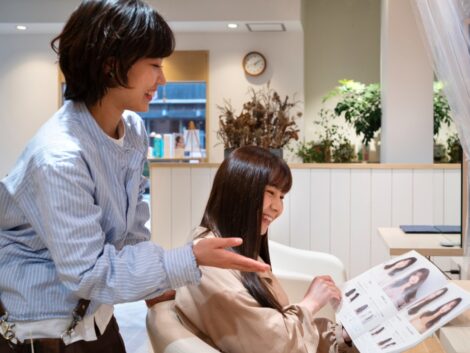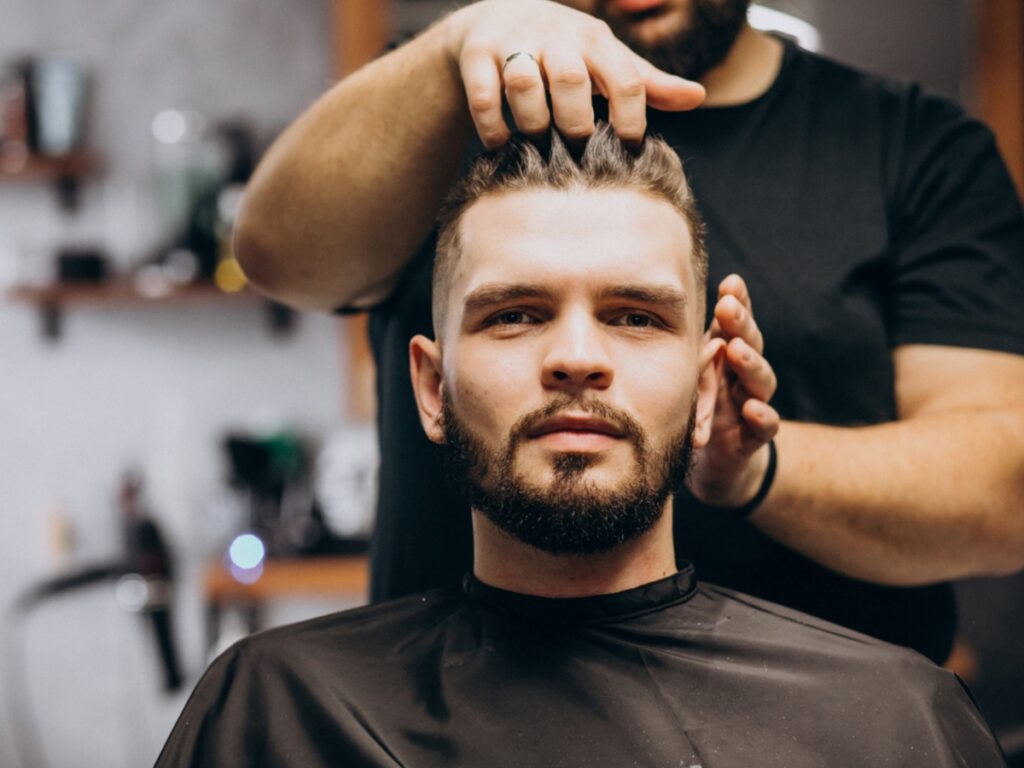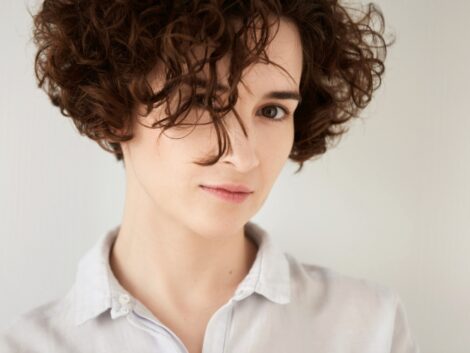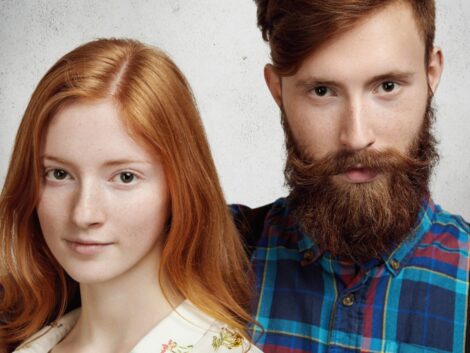The concept of gender neutrality is having a significant impact on haircut styles by challenging traditional societal norms and encouraging more diverse and inclusive hairstyles. Gender neutrality creates a space where individuals can freely express themselves, regardless of gender identity.
This movement has led to a shift in haircut styles, as previously gendered hairstyles are becoming less rigidly defined. Traditional gender categories like “men’s” and “women’s” haircuts are gradually being replaced by more fluid and gender-neutral options. Hairstylists and barbers are now creating styles that can accommodate a range of identities, allowing individuals to express themselves authentically.
As a result, many people are exploring different haircut styles that may have been traditionally associated with a specific gender. Short and buzzed haircuts, for example, were historically deemed appropriate for men but are now embraced by individuals across the gender spectrum. Similarly, longer hairstyles, including flowing locks and braids, are no longer confined to women alone.
Gender-neutral haircut styles often focus on versatile cuts tailored to individual preferences and facial features rather than societal expectations. This can include asymmetrical cuts, textured and layered styles, and creative use of hair colors. These styles allow individuals to showcase their unique personalities and break free from the confines of traditional gender norms.
Furthermore, salons and hairstylists are increasingly becoming more inclusive and accommodating of diverse gender identities. Many hair professionals seek training and education to understand their gender-neutral clients’ specific needs and desires. They also create safe and comfortable spaces where individuals can explore different styles without judgment or pressure.
How Are Hairstylists Adapting to Gender-Neutral Haircut Requests?
Hairstylists adapt to gender-neutral haircut requests by embracing inclusivity, expanding their skill sets, and creating safe spaces for clients to express their individuality.
Firstly, many hairstylists are educating themselves on gender diversity and gender-neutral clients’ specific needs and preferences. They attend workshops, seminars, and training programs to understand the nuances of gender-neutral haircuts and gain the necessary skills to execute them. This includes learning different cutting techniques, styles, and product recommendations that work well for all genders.
Secondly, hairstylists adopt a more consultative approach to understand each client’s unique style and desired outcome, regardless of gender identity. They listen attentively, ask open-ended questions, and prioritize effective communication to ensure they fully grasp the client’s vision. This allows for a collaborative process where the stylist and client work together to achieve a haircut that aligns with the client’s self-expression.
Additionally, hairstylists are creating inclusive spaces where gender-neutral clients feel comfortable and welcome. They are cultivating an environment that is free from judgment and stereotypes, recognizing that everyone’s identity and presentation are valid. This can be achieved through careful attention to salon decor, language used in communication, and even the availability of gender-neutral pronouns on intake forms.
Furthermore, hairstylists are integrating gender-neutral haircut options into their service menus. They actively promote and showcase diverse styles that individuals of all genders can embrace. This inspires clients and helps normalize the idea of gender-neutral haircuts within the broader community.

What Are Some Popular Gender-Neutral Haircut Styles Embraced by Diverse Communities?
There are a variety of gender-neutral haircut styles that have gained popularity and are embraced by diverse communities. These styles prioritize versatility, individuality, and breaking free from traditional gender norms. Here are some examples:
Pixie Cut
The pixie cut is a short and cropped hairstyle that can be tailored to suit different face shapes and hair textures. It defies gender stereotypes by offering a bold and confident look that people of all genders can embrace.
Undercut
The undercut involves shaving or closely trimming the hair on the sides or back of the head while leaving the top longer. This style allows for various creative possibilities, such as adding patterns or designs to the shaved area, and can be adapted to suit different personal styles.
Bob Cut
The bob cut is a timeless and versatile style that can be customized to fit various face shapes and hair types. It can be worn with straight or wavy hair and adjusted in length to suit individual preferences.
Long Hair with Layers
Long hair with layers is a popular gender-neutral style that allows for versatility, movement, and texture. Slight layering adds dimension and can be styled in various ways to suit different occasions and personal styles.
Fade Haircut
The fade is a stylish and versatile haircut that features a gradual transition from short to longer hair. It can be customized with different fades, such as high, mid, or low fades, and can be combined with various lengths and textures on top.
Buzz Cut
The buzz cut is a short and low-maintenance haircut that has gained popularity among diverse communities. It offers a clean and modern look and can be easily adapted to suit individual preferences by adjusting the length of the hair.
Shag Cut
The shag cut is a layered and textured style that can be worn at various lengths. It provides a laid-back and effortlessly chic appearance that suits various face shapes and hair types.
How Can Individuals Express Their Gender Identity Through Their Choice of Haircut?
Individuals can express their gender identity through their choice of haircut in several ways:
Length
Choosing shorter or longer lengths can be a way to align with one’s gender identity. For example, someone who identifies as male may opt for shorter hairstyles, while someone who identifies as female may prefer longer hair. However, these choices are not limited to traditional gender norms, and individuals are free to explore and express themselves without adhering to societal expectations.
Style
Selecting specific haircut styles can be a means of expressing gender identity. For instance, individuals may opt for more feminine or masculine styles, or they may embrace gender-neutral haircut options that do not conform to traditional gender norms. The style can incorporate various elements such as layers, texture, bangs, or bangless cuts to reflect personal preferences and individuality.
Color
Hair color can play a significant role in expressing gender identity. Some individuals may choose natural hair colors associated with their gender identity, while others may explore vibrant and bold colors to challenge gender norms and express their unique identity. Color choice allows individuals to embrace their creativity and stand out or blend in as they desire.
Accessories
Hair accessories can provide another avenue for expressing gender identity. People can choose accessories such as hairbands, clips, bows, or hats that align with their personal style and gender expression. Depending on individual preferences, these accessories can be gender-neutral or reflect traditional femininity or masculinity.
Cultural or Historical Influences
Some individuals may draw inspiration from their cultural or historical background to express their gender identity through their hair. They may incorporate traditional or historically significant hairstyles from their heritage, honoring their roots and embracing their identity.
Ultimately, the choice of haircut is a powerful form of self-expression and can be a way for individuals to represent their gender identity outwardly. It allows for creativity, authenticity, and the freedom to explore various styles beyond the boundaries of societal expectations, promoting a more inclusive and diverse understanding of gender.
What Role Do Social Media & Celebrities Play in Promoting Gender-Neutral Haircuts?
Social media and celebrities promote gender-neutral haircuts by normalizing and popularizing these styles, challenging traditional gender norms, and providing visibility and representation for diverse gender identities.
Social media platforms like Instagram and TikTok have become powerful tools for showcasing and celebrating gender-neutral haircuts. Hairstylists, influencers, and individuals share their experiences, transformations, and style inspirations. These platforms enable a global community to connect, inspire, and support each other, creating spaces where individuals can find validation, encouragement, and ideas for their journeys.
Celebrities also play a crucial role in promoting gender-neutral haircuts. When well-known figures confidently embrace these styles, it sends a message of acceptance and empowerment to a broader audience. Celebrities vocal about their support for gender diversity and authenticity contribute to breaking down stereotypes and demonstrating that gender-neutral haircuts are not only trendy but also valid expressions of identity.

Are There Cultural Differences in Perceptions of Gender-Neutral Haircuts?
Yes, there can be cultural differences in perceptions of gender-neutral haircuts. The acceptance and understanding of gender-neutral haircuts vary across cultures based on historical, sociocultural, and religious factors.
In some cultures, traditional gender norms dictate specific hairstyles and appearances for men and women, leading to stricter perceptions and expectations. Deviating from these norms may be seen as challenging societal and cultural values, resulting in resistance or judgment.
However, it is important to note that perceptions are not universally identical within a particular culture. Many cultures have diverse perspectives, and individuals and communities within each culture embrace and celebrate gender diversity.
In more progressive and inclusive cultures, there is often greater acceptance and support for gender-neutral haircuts. These cultures may have already made strides in challenging gender norms and promoting equal rights and expression for individuals of all gender identities.
It is crucial to approach these cultural differences with sensitivity and respect, recognizing that acceptance and understanding can vary widely.
Lastly, check out the mane caper shop.



